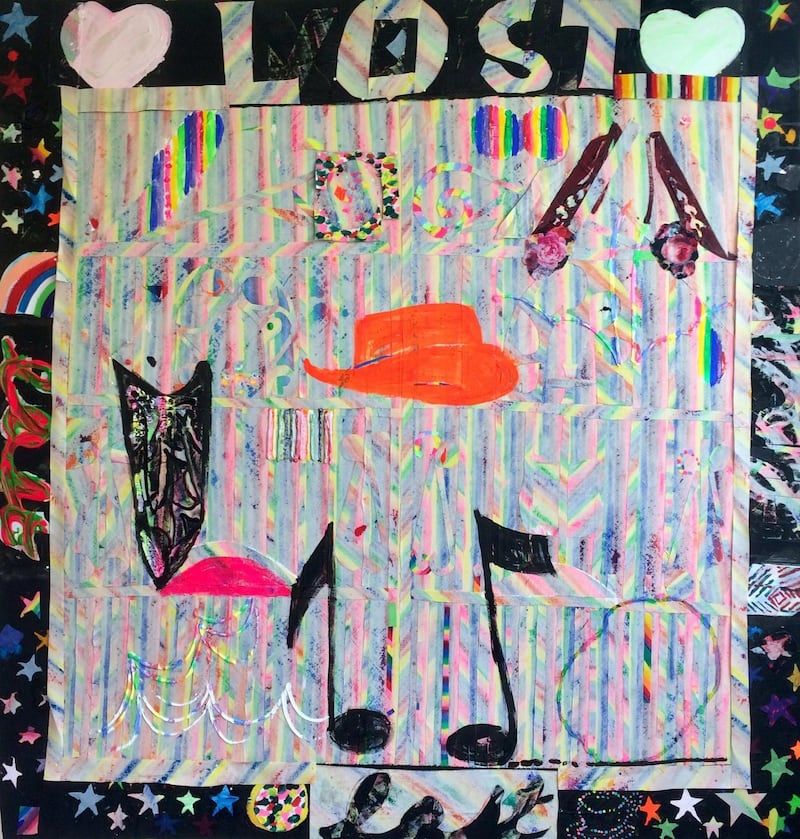What is it?
Lost Highway Guy is a painting by Mark Swords.
How was it done?
The painting was built up in many layers, mostly in thin glazes of colour, with varying degrees of opacity and translucency, so that the finished surface is a patchwork, or perhaps an interweaving, of many different strands of patterns, imagery and thought. Specific motifs – including words, notes, a hat – coalesce out of the nutritive ground of woven paint.
Where can I see it?
It is in Sword's exhibition Lost Highway Guy, at the Kevin Kavanagh Gallery, Chancery Lane, Dublin until November 24th. See kevinkavanaghgallery.ie
Is it a typical work by the artist?
In a way it is typical, but then Swords is an unpredictable artist. Born in Wicklow, he studied at NCAD, graduating in 2001. He went on to complete an MFA in 2004. It's fair to say that painting has been his default activity since, but in the context of a great deal of three-dimensional work. He doesn't seems to critically distinguish between different media but uses what seems appropriate.
He is a fine, audacious colourist, and there has been a consistent emphasis on tactile, manual craft skills in his work that brings him into all sorts of areas of making. Weaving and rugs, for example, have often featured large.
The centrepiece installation for his exhibition MOSAIC at the Wexford Arts Centre in 2011 was a wall lined with geometric-patterned tiles arranged so that that they occasionally departed from their orderly, uniform pattern.
He wrote that the wall was based on a hallway that appeared recurrently in a sitcom set in a 1960s apartment block. He wasn’t sure whether it was a set or an actual location, but he liked the way the tiles were laid to produce “a hiccup in the overall rhythm”. That human interruption, or human touch, in uniform, mechanical pattern, is central to his work.

Urban experience
His title MOSAIC was metaphorical as well as literal – collage might also be a useful term. Mosaic was, he thought, a good description of his general approach. As he writes of his new body of work: "I tried to allow anything into the paintings – from the big questions to the incidental, the accidental."
That's something he took to extremes with his ambitious 2017 exhibition at Temple Bar Gallery, The Living and the Dead. With an holistic view of a city as its focus (Joyce's Dublin was clearly relevant, and Swords' daily experience of commuting to his studio) the show marshalled densely packed paintings on opposite walls, organised around such dualities as life and death, day and night, past and present, rich and poor.
The city in this case was the mosaic, a vast, impossibly complex jumble of overlapping elements. Here, as always, Swords seemed drawn to the way we experience the world, how we tackle the onslaught of stuff that greets us every moment.
In his new work, he is presumably the guy on Hank Williams' Lost Highway, in the studio late at night, looking forwards and backwards, allowing his "thoughts obsessions and anxieties" into the paintings he is making, wondering if he should be elsewhere. Most people, he suggests, are on that highway at least some of the time.











